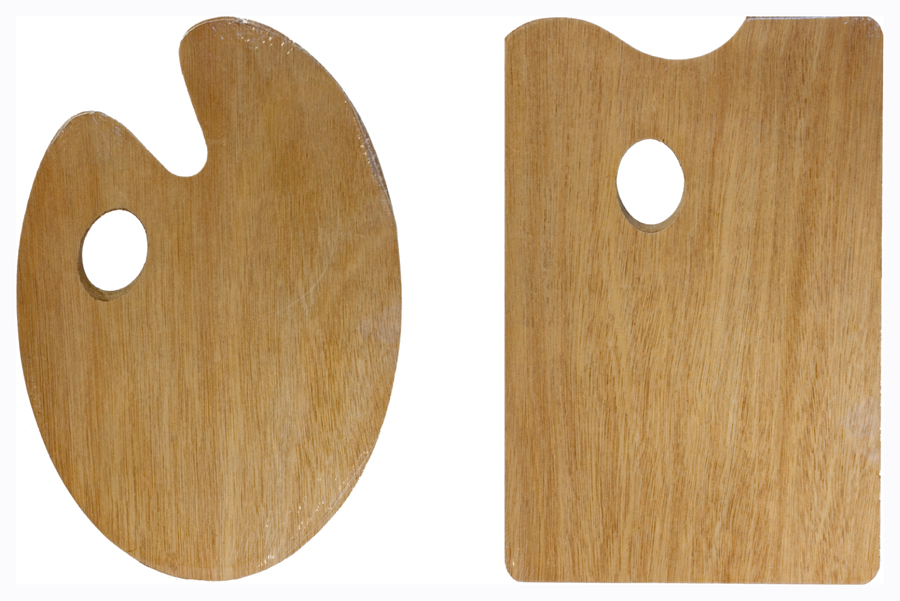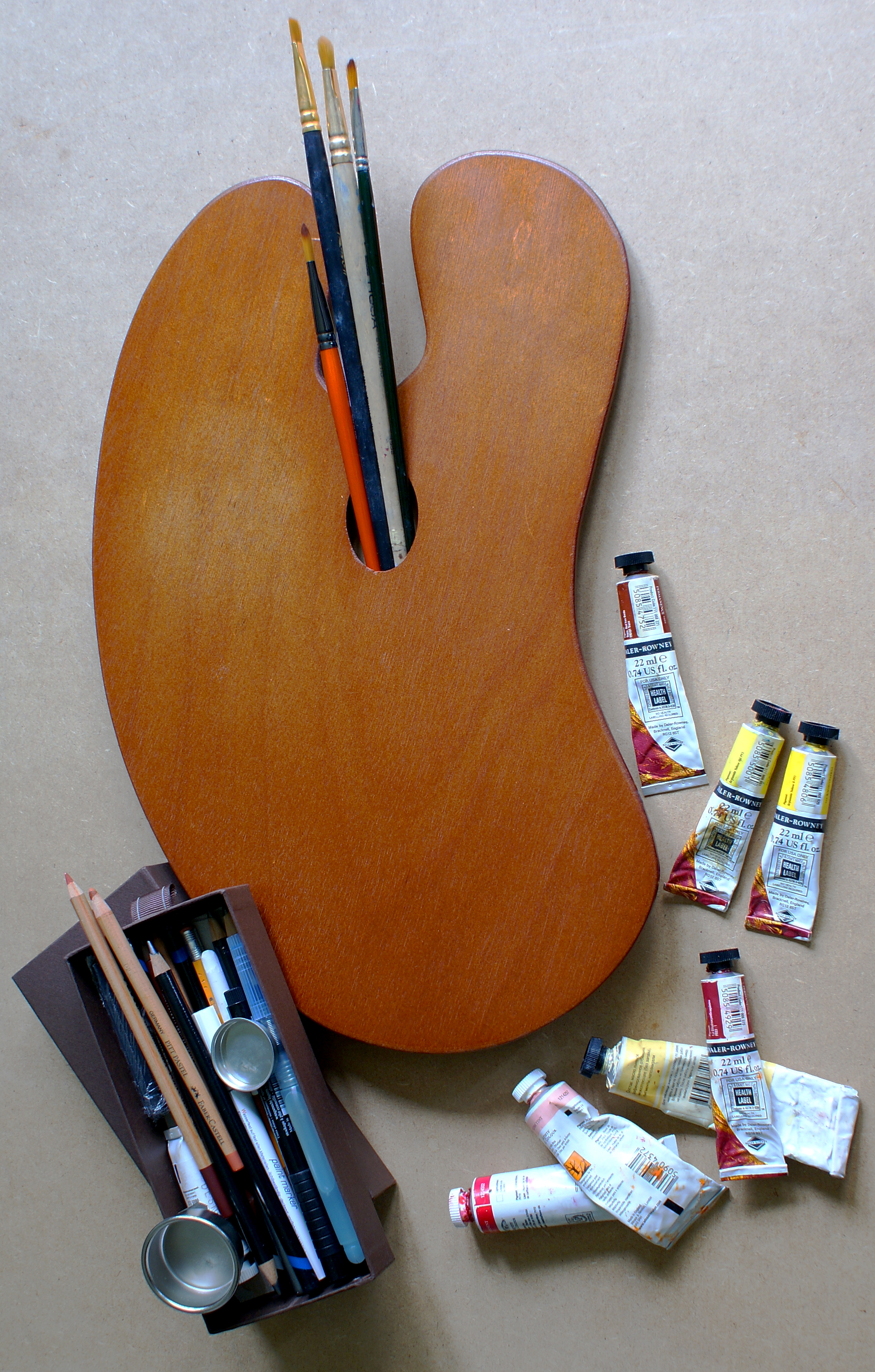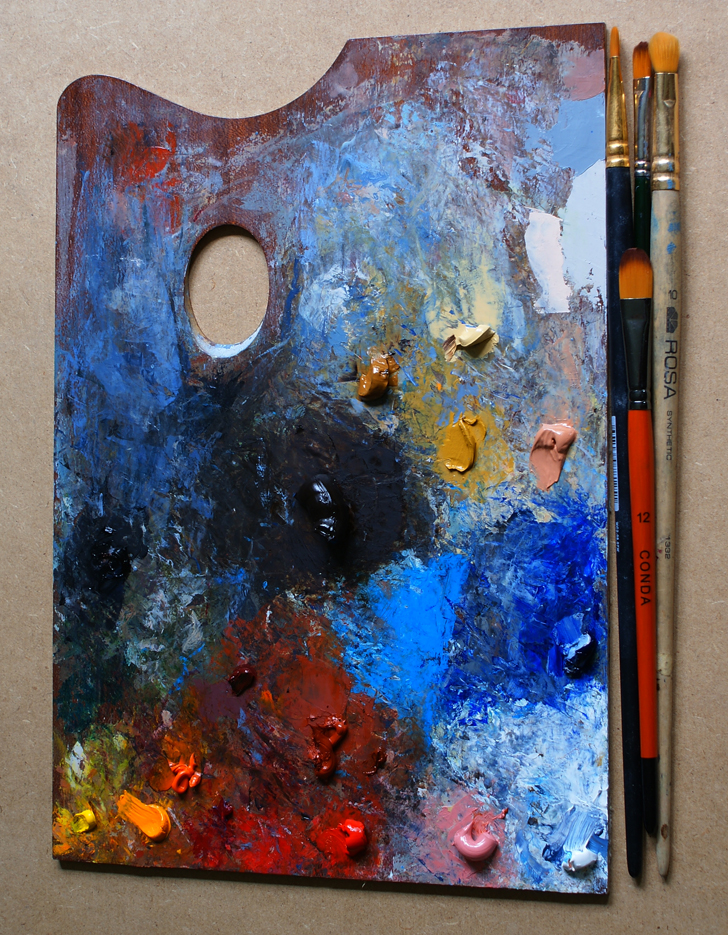Oil painting materials and techniques: PALETTES

Oil painting materials and techniques:
PALETTES
The most important qualities in a palette are that it should be large enough, and that it should balance well on the thumb. Whether it is round or square is a slight matter.
The oval palette is usually best for the studio because the corners are seldom of use, and add weight. But for sketching, the square palette fits the box best.
Get a palette much larger than you think you want. When you get it on your thumb the mixing-surface is much less than there seemed to be before it was set, for all the actual surface is between the row of colors and the thumb.
If the palette is polished it is not essentially better; it is easier to keep clean, as far as looks go, but of no greater real service. If the choice is between a larger unpolished and a smaller polished one, the price being the consideration, get the larger one.Get a light wood in preference to a dark wood for a choice of color, but not if there is better grain or lighter weight in the darker palette. It is an assistance in painting not to have to compare the tint you are mixing with too dark a surface, for the color looks lighter than it is; so the light wood will help you to judge justly of the color while the palette is new.
When it has been worked on a while it will come to have a sympathetic color anyway.
This bears on the cleanliness of your palette. It is a mistake to consider that cleanliness demands that the palette should be cleaned to the wood and polished after every painting. On the contrary, if a little of the paint is rubbed out over the palette every time it is cleaned, after a few weeks there will come a fine smooth polish of paint, which will have a delicate light gray color, which is a most friendly mixing surface.




This Post Has 0 Comments